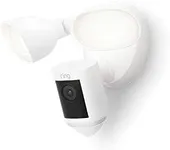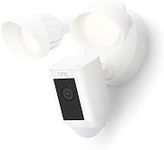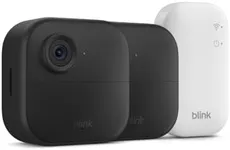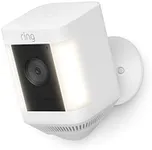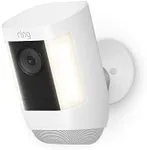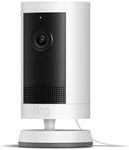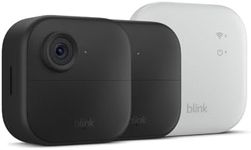Buying Guide for the Best Outdoor Cameras
When choosing an outdoor camera, it's important to focus on the features and specifications that support your particular security needs and your environment. Think about where you will place the camera, what you need to monitor, and how you plan to access and use the footage. Good outdoor cameras are designed to withstand the elements, provide clear video (day and night), and offer easy access to footage. Understanding each key specification will help you match a camera's capabilities to your unique situation.ResolutionResolution refers to how clear and detailed the camera's video footage is, usually measured in pixels (such as 1080p or 4K). Higher resolution means sharper and more detailed images, which can be useful for identifying faces or license plates. Cameras generally fall into basic definition (720p), standard high definition (1080p), and ultra high definition (2K or 4K). Consider a higher resolution if you want to capture fine details or cover a large area, while lower resolutions might suit general monitoring of less critical areas.
Field of ViewField of view determines how wide an area the camera can see. This is typically measured in degrees. Narrow fields (60-90°) see less area but in greater detail, while wide fields (100-180° or more) cover more of your yard or driveway in a single shot. To decide what's right for you, think about where you'll mount the camera and the specific area you want to monitor — for single doorways or gates, a narrow view can be enough, while large open areas benefit from a wider view.
Night VisionNight vision allows the camera to record clear video in low light or darkness using infrared LEDs or similar technology. The effectiveness of night vision is usually measured by the distance (in meters or feet) that the camera can see in the dark. Short ranges (up to 10 meters/30 feet) work for small yards or porches, while longer ranges serve larger properties. If night surveillance is important to you, choose a camera with better night vision capabilities and make sure the range covers your target area.
Weather ResistanceWeather resistance is all about how well the camera can handle outdoor conditions like rain, heat, or freezing temperatures. This is usually shown by an IP (Ingress Protection) rating, like IP65, IP66, or IP67. The first number rates protection from solid objects and dust, and the second from water. For example, higher numbers mean better protection. If you live in a harsh climate or want to place the camera outside and exposed, choose a model with a higher IP rating.
ConnectivityConnectivity refers to how the camera sends its video signal and connects to your devices. Outdoor cameras can be wired (using Ethernet cables), wireless (using Wi-Fi), or sometimes cellular. Wired cameras tend to be more reliable but require more effort to install, while wireless cameras are easier to set up and move but depend on strong Wi-Fi signals. Base your choice on where you want to place the camera and your home’s internet coverage and reliability.
Power SourceThe power source is how the camera gets its energy to run. Some use wired power (either a regular power outlet or Power over Ethernet), some use batteries, and others can be solar-powered. Wired cameras offer continuous power for 24/7 surveillance but might need more installation work, battery-powered cameras are flexible and easy to put up but need occasional charging, and solar-powered models need good sunlight. Think about your preferred balance between convenience and maintenance.
Storage OptionsStorage options refer to how your recordings are saved. This can be on a memory card in the camera (local storage), to a recorder or hub, or uploaded online (cloud storage). Local storage gives you direct control but might fill up quickly, while cloud options allow remote access and larger backups but can require a subscription. Choose your storage type based on your privacy preferences, how much footage you want to keep, and whether you want remote access.
Motion Detection and AlertsMotion detection helps the camera notice movement and send alerts to your phone or email when something happens. Some cameras have basic motion sensing while others offer more advanced features, like customizing zones or filtering out pets. If you want to know right away when someone is at your door or a car enters your driveway, look for cameras with reliable and adjustable motion detection.
Audio FeaturesSome outdoor cameras include a built-in microphone for recording sound, or even a speaker for two-way talk, letting you speak with visitors or delivery people remotely. Simple audio lets you hear what’s going on, and two-way audio is helpful for communication without opening the door. Decide if you need just to observe, or if you want to interact through your camera.
